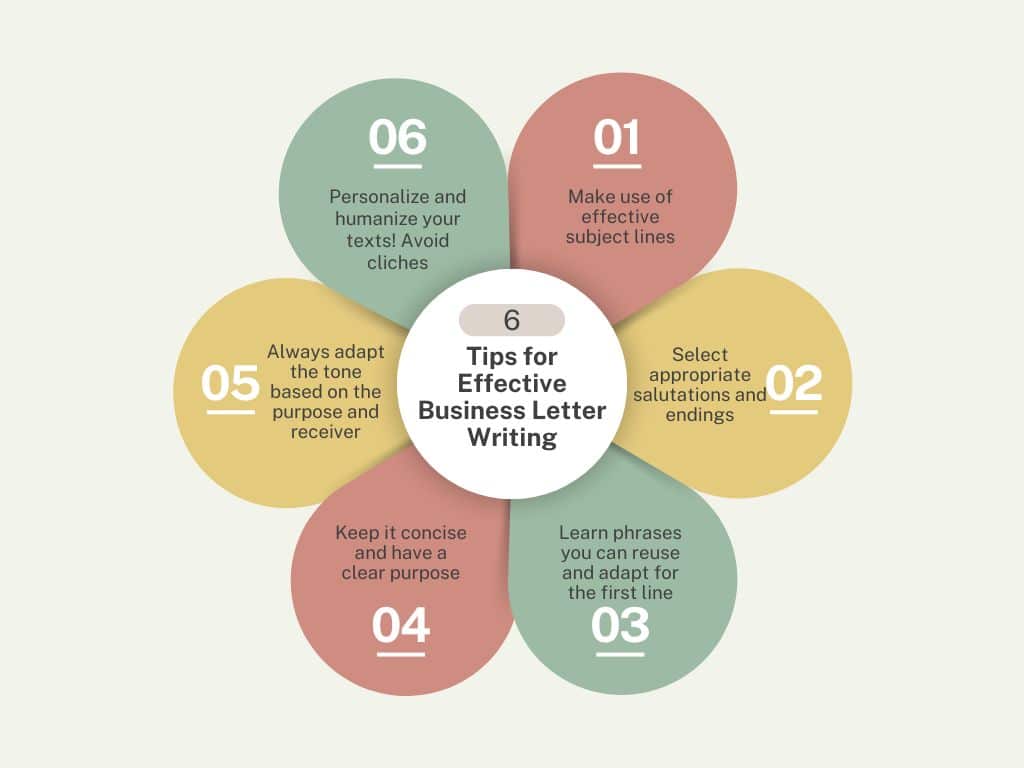Have you ever wondered why professionals start letters and emails with “To whom it may concern”? Doesn’t it sound a little too… basic? Why not use more interesting openers like “He that hath ears, let him hear” or “I hope this email finds you before I do”?
Okay, I’m kidding, because you definitely do not want to start a professional letter like that. You are a professional, after all.
Anyways, “To whom it may concern” is widely used when the name of the person being addressed is not available. It is also used when there is more than one reader. The phrase is typically used in a professional context on documents such as job applications and formal letters.
However, sometimes, it can be difficult to determine how to use “To Whom It May Concern”. So, I will teach you how to use it properly below, as well as when to use alternatives.
Key takeaways
To Whom It May Concern is a formal greeting that can be used to start an email or letter addressed to someone whose name you don’t know or to no one in particular.
It is usually used in a professional context on documents such as job applications and formal letters.
Using this salutation can suggest to the recipient that you’re sending out a mass email to many different people.
Even if you don’t know the name of the person you’re writing to, you should either find out or use a job title to make your salutation more personal.
Why people use “To Whom It May Concern”
Traditionally, the phrase “To Whom It May Concern” is used in business correspondences when you don’t know the recipient’s name or you’re not writing to a specific person. For example, if you’re writing a cover letter as part of a job application and it’s unclear who will be reviewing your application from the job posting, you may start your letter with “To Whom It May Concern.”
This greeting was developed when it was more difficult to identify people’s job roles by researching companies, online public directories, or professional organizations. Today, it’s much easier to find the names of HR managers, department heads and other decision-makers you may be attempting to reach. As a result, it has come to be seen as outdated and old-fashioned.
However, you should only include someone’s name if you’re certain they’ll be the one receiving your email or letter. Addressing your message to the wrong person could create confusion or look unprofessional. In those circumstances, it may be better to use “To Whom It May Concern” or an alternative.
When and how to use “To Whom It May Concern” correctly
There are some contexts in which “To Whom It May Concern” is the best choice. It’s legitimate to use this salutation when your letter or email is really addressed to a nonspecific group of people or to an entire organization. Some examples include:
- A formal complaint directed at a company in general
- A reference or recommendation letter for someone who will be applying to a variety of positions
- A letter of interest to be sent out to various organizations
When you do use “To Whom It May Concern,” make sure to write it correctly. It’s considered most formal to use a colon (rather than a comma) after this phrase. You should also make sure to capitalize every word and to get the phrasing right: use the object pronoun “whom,” not “who.”
- ❌ To whom it may concern,
- ❌ Dear Whoever it may Concern:
- ❌ To Who It May Concern:
- ✅ To Whom It May Concern:
“To Whom It May Concern” Letter Template
How to use “To whom it may concern” in business correspondence
Job applications & cover letters
You can use the phrase, “To Whom It May Concern” when you don’t know the hiring manager’s name. As with formal letters and documents, place the phrase at the top of the letter, after the date, and before the main message. In the next paragraph, briefly introduce yourself, mention the position you are applying for, and where you saw the job advertised. Tailor the rest of the letter to the job and the company.
Describe your experience, skills, and qualifications relevant to the position. Highlight why you are interested in gaining employment with the company by showing that their mission and values align with theirs. End the letter with a strong closing statement that reiterates your interest and enthusiasm for the position.
Finally, add your digital signature.
Formal letters & documents
When addressing a letter with “To Whom It May Concern,” the first letter is capitalized, and a colon is placed after it. Place “To Whom It May Concern” at the beginning of the letter, after the date, and before the main message. Since it is a formal phrase, ensure that the tone of your letter remains professional.
After the salutation, state the purpose of the letter. Keep the message clear and concise. End the letter with a formal closing such as “Yours faithfully,” or “Sincerely.”
Requests for references for work
Start your reference request letter with the phrase, “To Whom It May Concern”, just like you would do for any formal document. Place the phrase at the top of the letter, after the date, and before the main message. You will then need to introduce yourself by mentioning your name and explaining that the purpose of the letter is to request a reference.
Mention how you know the person and how long you’ve known them. You might have been their manager or worked with them on a project. Ask whether they would be willing to provide a reference and specify whether it is a character or an employment reference.
Express how much you would appreciate their cooperation, and that you value their time. State that you are willing to assist them in the reference request writing process by providing the information they need to include. Leave your contact information and ask that they contact you if they need further assistance.
To end the letter, thank them and use a formal closing.

“To Whom It May Concern” letter examples
1: Reaching out to a large company or new department
To Whom It May Concern:
I saw your company announced the opening of two new coworking spaces on the East Coast. I work with Levol, a sustainable office furniture company in the Boston area.
We are coming out with a new line of pieces that coincide with the opening of your new space. I’d love to contact the team member in charge of furnishing your locations to discuss the possibility of working together.
Regards,
Gia
2: Recommendations/reference checks
To Whom It May Concern:
Stanley was an excellent employee during his three years at BusinessYield.
He took his work very seriously, volunteered for projects outside his regular duties (i.e., volunteer floor fire warden and safety officer), and was our top-performing salesperson all three years. I would highly recommend him for this position.
Regards,
Jimmy Arnis
3: Prospecting
To Whom It May Concern:
I noticed your company recently parted ways with its paper supplier. I work with Dunder Mifflin, a local Scranton paper supplier, and would like to speak with the person in charge of paper ordering at your company.
We pride ourselves on personalized customer service and fast delivery, and I’d love to see if we’re the right fit for you.
Best,
Jim Halpert
4: Introductions
To Whom It May Concern:
I received your request for a price quote on 50 reams of paper from Dunder Mifflin. I’ve attached the quote to this email and would be happy to answer any questions you have.
Also, I’d love to know your name and a little more about your business!
Kind Regards,
James Trafford
5: Company complaints
To Whom It May Concern:
I was extremely disappointed the cat poster I ordered only has three jazz-playing cats instead of the four depicted on your website. I would like a full refund and the correct poster as soon as possible.
Thank you,
Angela Martin
When not to use “To Whom It May Concern”
Despite its popularity and versatility, you should avoid “To Whom It May Concern” whenever possible. It is largely outdated, stuffy, and lazy. With our access to the internet today, it’s fairly simple to find the name and even email address of the person with whom we wish to speak.
Because of this, “To Whom It May Concern” can demonstrate a lack of effort in correspondence which doesn’t set a positive tone for the rest of your business relationship.
Here are a few tips for finding almost anyone’s name:
- Ask your HR rep or recruiter – If you’re writing a cover letter or email to a hiring manager, ask your recruiter or HR rep for the correct name.
- Visit the company’s LinkedIn profile – At the top of their profile, you’ll see a hyperlinked prompt that says, “See all [number of employees] on Linkedin.” Click that prompt to see a list of all employees. You should be able to skim the list until you find the person, role, or title you’re hoping to connect with.
- Visit the company’s “About Us” page – Smaller companies might list all employees and their titles on their “About Us” or “Team” page. At the very least, you’ll find a general company inbox where you can send a request to learn the name of the person you’re trying to reach.
- Pick up the phone – Call the company where your prospect works and ask the receptionist or administrator for that person’s name, contact information, or advice on how best to reach them.
Best alternatives to “To Whom It May Concern” for interviews
The best alternative to “To Whom It May Concern” is to write to a specific person where possible. If you know or can find out (e.g., online) the name of the person you’re addressing, then you should use it.
Use a title like “Ms.” or “Mr.” in combination with the person’s last name, or write out their full name. In a formal context, you usually shouldn’t address someone by their first name alone.
Here are some of the best alternatives that you can use to replace “To Whom It May Concern” in your next letter:
Dear/Hello [Name of Person Who’d Be Your Boss]
The best thing you can do for yourself when addressing your cover letter is figure out who the person filling the open role would report to i.e. your potential future boss.
Sometimes it’s easy: When I applied for my current role, the person who introduced me already gave me the editor’s name. So, I just addressed my letter to him. But other times, it won’t be as immediately clear. Do some research and see if you can infer who it is, or if you happen to have a connection at the company, ask them!
While you’re doing your company research, try to assess how formal the culture is to determine:
- Whether to start with “Dear” or “Hello” (or maybe neither—you can also go with just their name)
- Whether to use honorifics (Mr., Ms., Dr., Prof., etc)
- Whether to use a full name or just a first name
You’ll probably want to err toward more formal if you’re not sure, and make certain you don’t accidentally misgender someone with the wrong honorific (if you can’t confirm it 100%, drop any gendered language and just use the name).
Even if you don’t have your prospective boss’s name and choose one of the options below instead, make sure you still ask yourself the same questions about formality and tone.
Dear [Name of the Head of the Department for Which You’re Applying]
If you’ve tried to figure out who your boss would be and it’s just not yielded any answers, don’t panic. It’s not always possible to find that information at this point in the process.
However, you might still be able to address your cover letter to a specific person by simply choosing the head of the department the role falls under. Sure, it may be your prospective boss’s boss or their boss, but in a way, you’d still be reporting to them up the chain. And it demonstrates that you made an effort and considered what part of the organization you’d be joining and how you’d fit in.
Dear [Name of Department for Which You’re Applying]
Along the same lines, if you can’t find the name of a department head, you can go ahead and address your letter to the team or department. For example, you could say “Dear Sales Department” or “Hello Product Team.”
Dear [Name of Recruiter]
Now, if you’re determined to write to a specific person but have given up on finding the manager or department head, there’s still hope! If you can zero in on the recruiter or talent acquisition specialist (or the head of recruiting), you can address your letter to them. After all, they’ll likely be the first ones to read it and decide whether you should move on to the next step.
Dear [Whatever The Company Calls Their Recruiting Team or Department]
If you can’t figure out the recruiter’s name, you can also address the team—just take a few minutes to look up what exactly this particular company calls it. You’ll end up with something like “Dear Recruiting Department” or “Dear Talent Acquisition Team.”
Also, you might want to stick the name of the company in there and make it something like “Dear BusinessYield Talent Acquisition Team.” That way, you’re giving a first signal that you know which company you’re applying to and not just sending a generic letter.
Dear Recruiter/Hiring Manager
Another option is to address your letter more generically to the recruiter or hiring manager by using those titles, i.e. “Dear Recruiter” or “Dear Hiring Manager.”
Your ultimate goal when you’re writing a cover letter is to get to the next step in the hiring process. Just remember that the whoms won’t be impressed if you address them as such. After all, they do have names, roles, teams, departments, and committees. Pick one of those instead and your letter is much more likely to get read, and you’re much more likely to get hired.
Final word on “To Whom It May Concern”
“To Whom It May Concern” is a useful phrase to use when writing to an individual and you don’t know their name, or when more than one person is addressed. Whether requesting references, addressing hiring managers, or writing a prospect letter, the phrase adds a professional voice to your correspondence.
But while it is an acceptable expression, you should always strive for personalization by using the internet to search for the individual’s name.
Recommended Articles
- LETTER OF SUPPORT: How To Write A Letter Of Support
- PAYOFF LETTER: What Are They and How Are They Used
- LETTER OF TERMINATION: Definition, How to Write One and Samples
- EMPLOYMENT OFFER LETTER: What Is It, Examples, How to Write It & Contract
- Application Letter For Loan: How To Write A Loan Request Application In Nigeria
- LETTER OF INTEREST VS COVER LETTER: Key Differences






